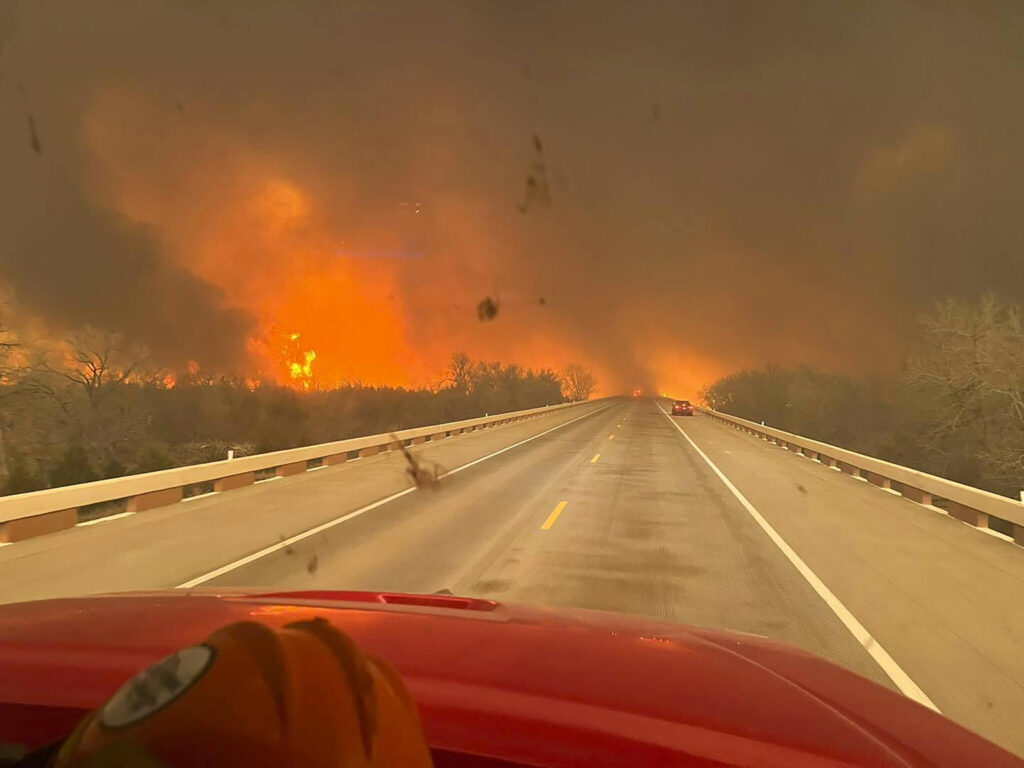The explosive growth of the second-largest wildfire in Texas history slowed as snow fell and winds and temperatures dipped, but the massive blaze was still untamed and threatening more death and destruction.
Quick Read
- The Smokehouse Fire, Texas’ second-largest wildfire in history, has slowed due to snowfall, lower temperatures, and decreased winds, offering a chance for progress before conditions worsen again.
- The fire, also affecting Oklahoma, covers 1,300 square miles with only 3% containment.
- The weather provided a temporary reprieve, but critical fire conditions are expected to return, posing ongoing challenges for firefighting efforts.
- An 83-year-old woman is confirmed dead, with more damage assessments pending as the fire continues to threaten the area.
- The fire has caused extensive destruction, with many homes and structures damaged or destroyed, and large areas of land charred.
- Texas Governor Greg Abbott declared a disaster in 60 counties, and the Pantex nuclear weapon plant temporarily evacuated nonessential staff.
- The fire has devastated communities, with many residents losing homes and witnessing widespread destruction.
- Emergency management officials and local leaders are coordinating responses and preparing for the possibility of further fire growth.
The Associated Press has the story:
Firefighters race to corral Texas wildfires before a hot, windy weekend
Newslooks- CANADIAN, Texas (AP) —
The explosive growth of the second-largest wildfire in Texas history slowed as snow fell and winds and temperatures dipped, but the massive blaze was still untamed and threatening more death and destruction.
The Smokehouse Fire is the largest of several major fires burning in the rural Panhandle section of the state. It has charred 1,300 square miles (3,370 square kilometers) and crossed into Oklahoma.

Firefighters have made little progress corralling it — containment was at just 3% — but Thursday’s forecast of snow, rain and temperatures in the 40s offered a window to make progress before temperatures and winds increase this weekend. Authorities have not said what ignited the fires, but strong winds, dry grass and unseasonably warm temperatures fed the blazes.
Less than an inch of snow is expected, but moisture is not the only benefit, said National Weather Service meteorologist Samuel Scoleri.
“It will help keep relative humidity down for the day, and that will definitely help firefighters,” Scoleri said.
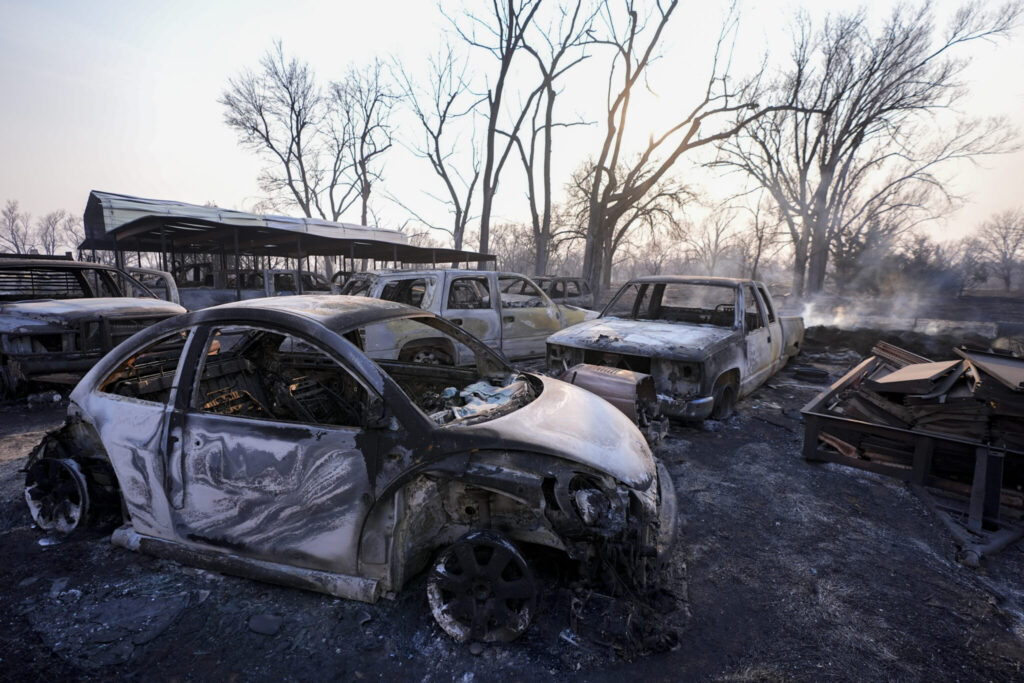
Snow and rainfall were expected to end Thursday afternoon, with dry, windy conditions returning Friday and critical fire conditions possible again Saturday and Sunday.
An 83-year-old woman is the only confirmed death so far, but with flames still menacing a wide area, authorities have yet to conduct a thorough search for victims or tally the numerous homes and other structures damaged or destroyed.
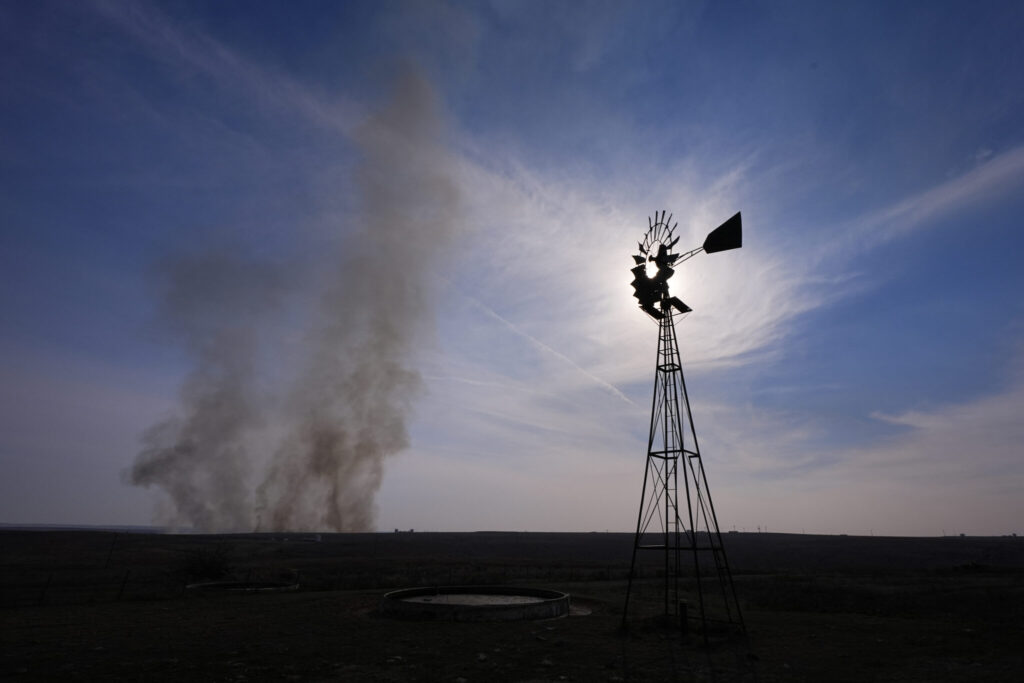
Nim Kidd, chief of the Texas Division of Emergency Management, said the weekend forecast and “sheer size and scope” of the blaze are the biggest challenges for firefighters.
“I don’t want the community there to feel a false sense of security that all these fires will not grow anymore,” Kidd said. “This is still a very dynamic situation.”
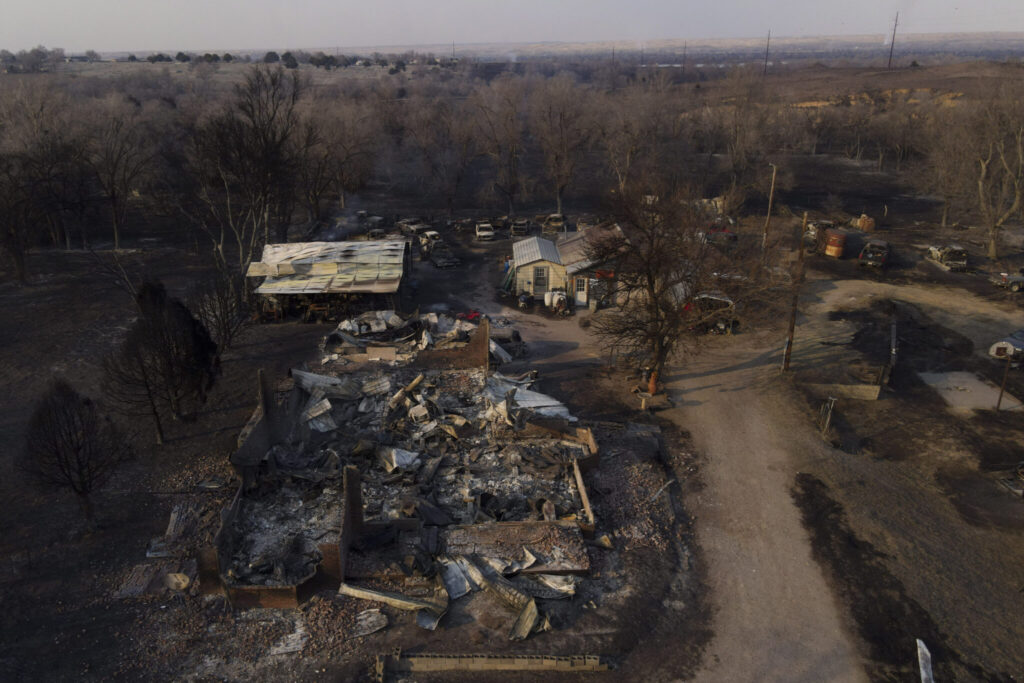
The largest fire recorded in state history was the 2006 East Amarillo Complex fire, which burned about 1,400 square miles (3,630 square kilometers) and resulted in 13 deaths.
This week, walls of flames were pushed by powerful winds while huge plumes of smoke billowed hundreds of feet in the air across the sparsely populated region. The smoke delayed aerial surveillance of the damage in some areas.
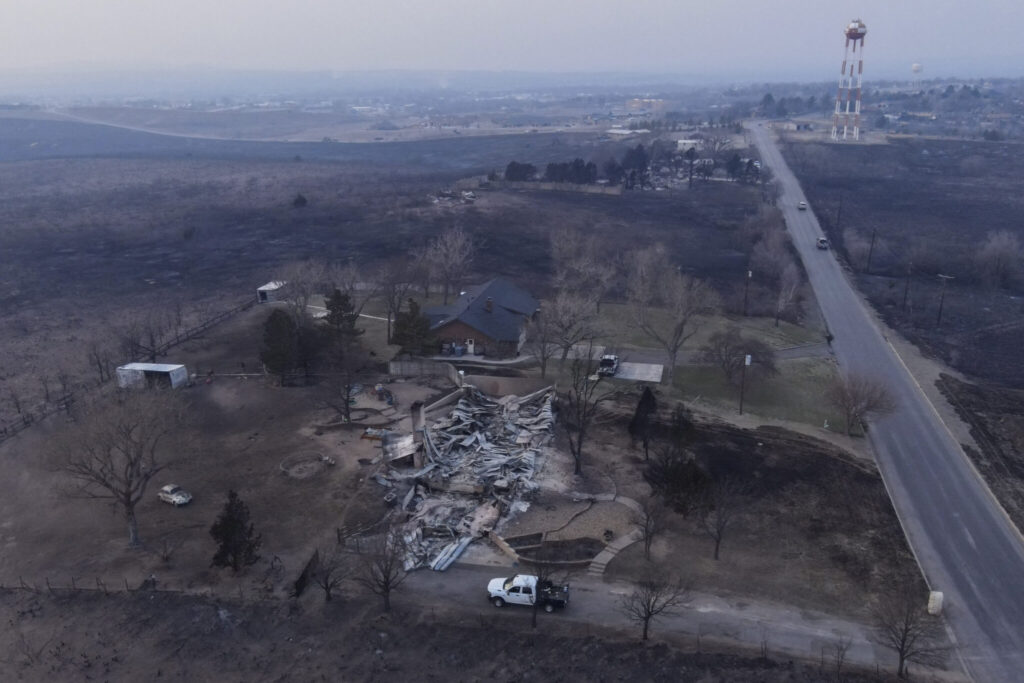
“There was one point where we couldn’t see anything,” said Greg Downey, 57, describing his escape as flames bore down on his neighborhood. “I didn’t think we’d get out of it.”
The woman who died was identified by family members as Joyce Blankenship, a former substitute teacher. Her grandson, Lee Quesada, said he had posted in a community forum asking if anyone could try and locate her. Quesada said deputies told his uncle on Wednesday that they had found Blankenship’s remains in her burned home.
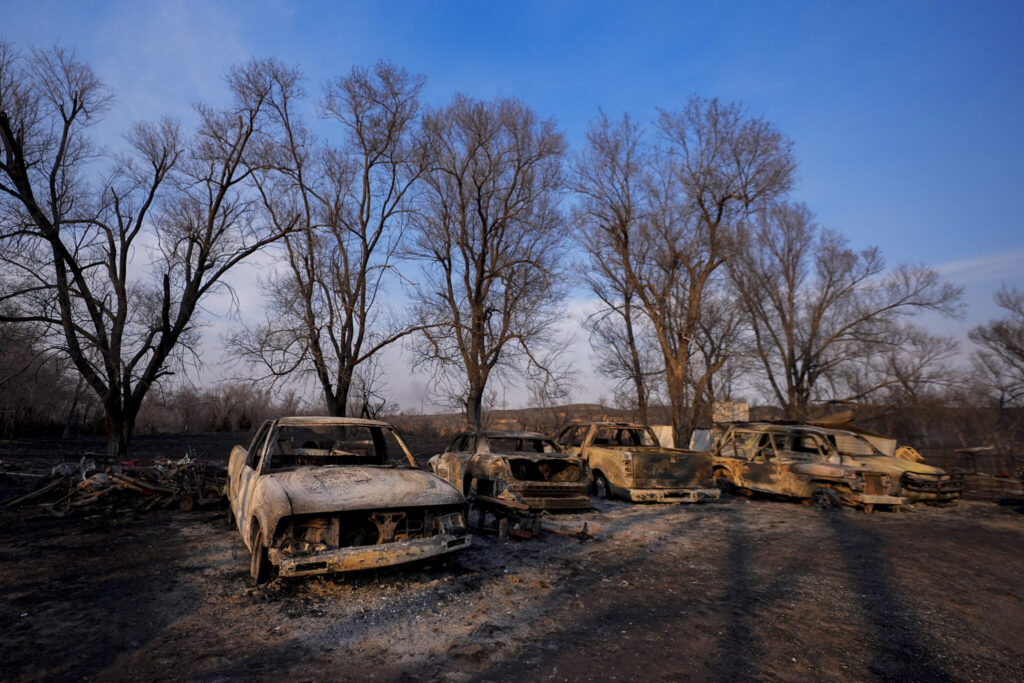
Quesada said she’d surprise him at times with funny little stories “about her more ornery days.”
“Just talking to her was a joy,” he said, adding that “Joy” was a nickname of hers.
Republican Gov. Greg Abbott issued a disaster declaration for 60 counties. The encroaching flames caused the main facility that disassembles America’s nuclear arsenal to pause operations Tuesday night, but it was open for normal work Wednesday.
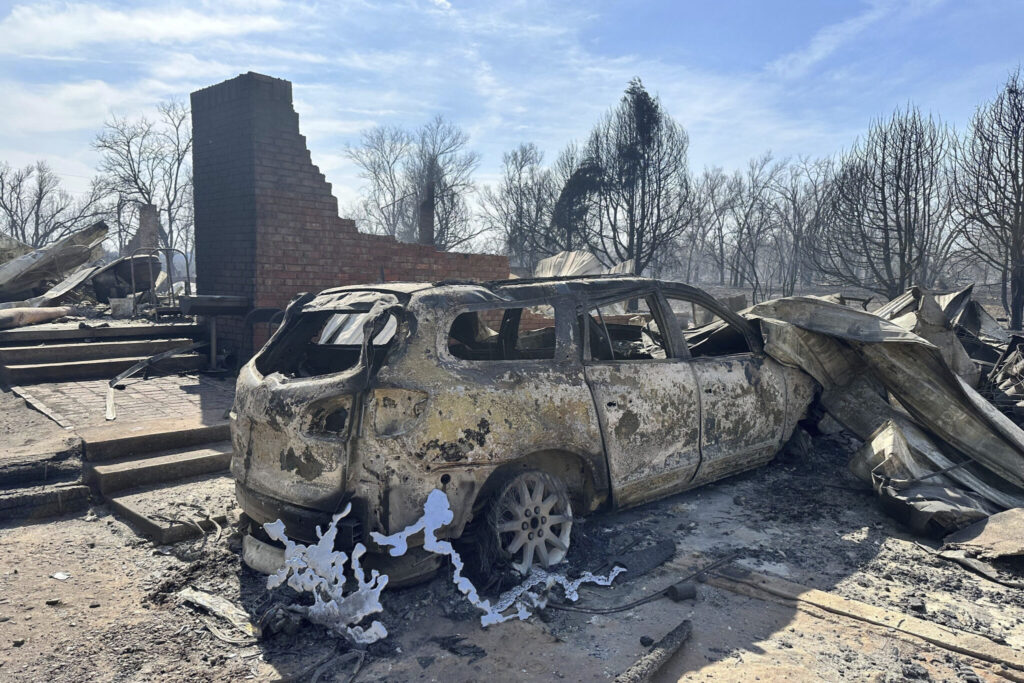
Hemphill County Emergency Management Coordinator Bill Kendall described the charred terrain as being “like a moonscape. … It’s just all gone.”
Kendall said about 40 homes were burned around the perimeter of the town of Canadian, but no buildings were lost inside the community. Kendall also said he saw “hundreds of cattle just dead, laying in the fields.”
Tresea Rankin videotaped her own home in Canadian as it burned.
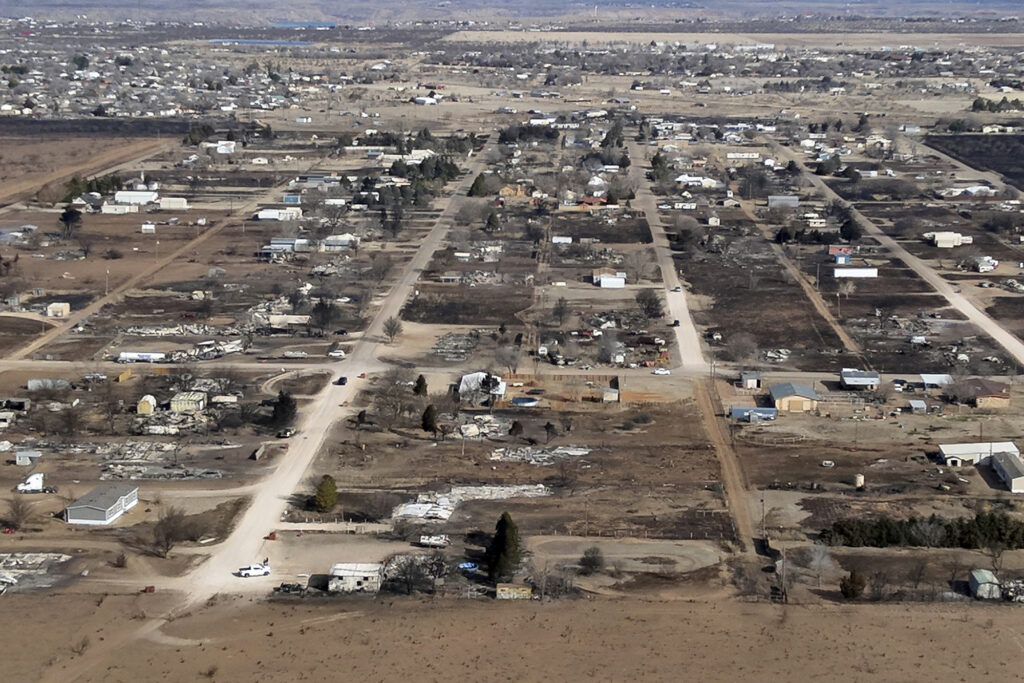
“Thirty-eight years of memories, that’s what you were thinking,” Rankin said of watching the flames destroy her house. “Two of my kids were married there … But you know, it’s OK, the memories won’t go away.”
The small town of Fritch, north of Amarillo, lost hundreds of homes in a 2014 fire and appeared to be hit hard again. Mayor Tom Ray said Wednesday that an estimated 40-50 homes were destroyed on the southern edge. Ray said natural gas remained shut off for the town of 2,200.
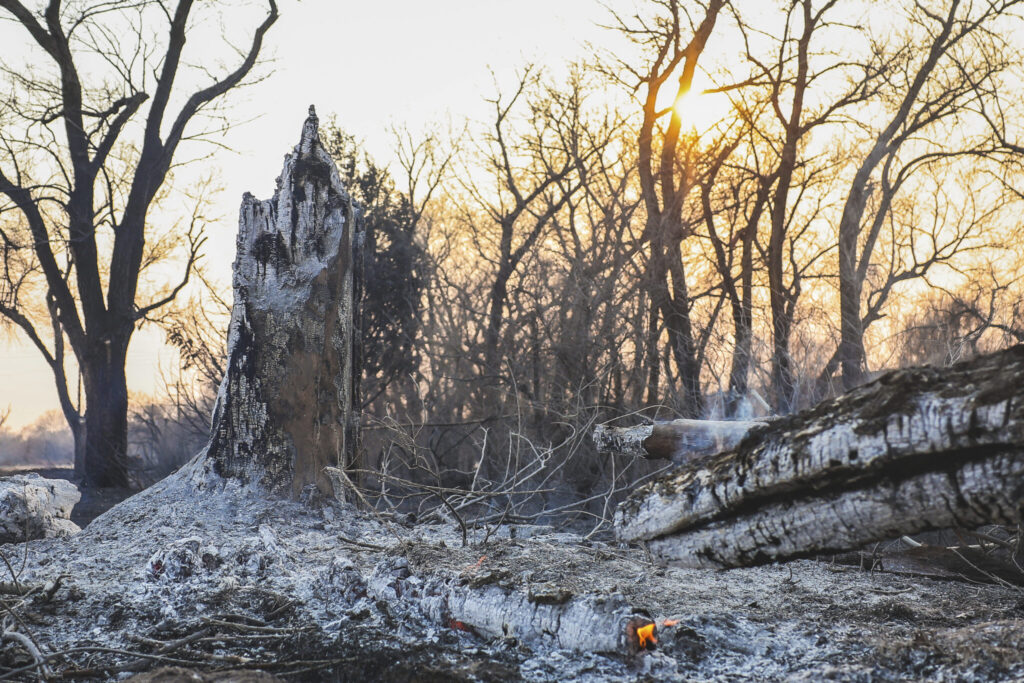
Residents are probably not “prepared for what they’re going to see if they pull into town,” Hutchinson County Emergency Management spokesperson Deidra Thomas said in a social media livestream. She compared the damage to a tornado.
Near Borger, a community of about 13,000 people, emergency officials at one point late Tuesday answered questions from panicked residents on Facebook and told them to get ready to leave if they had not already.
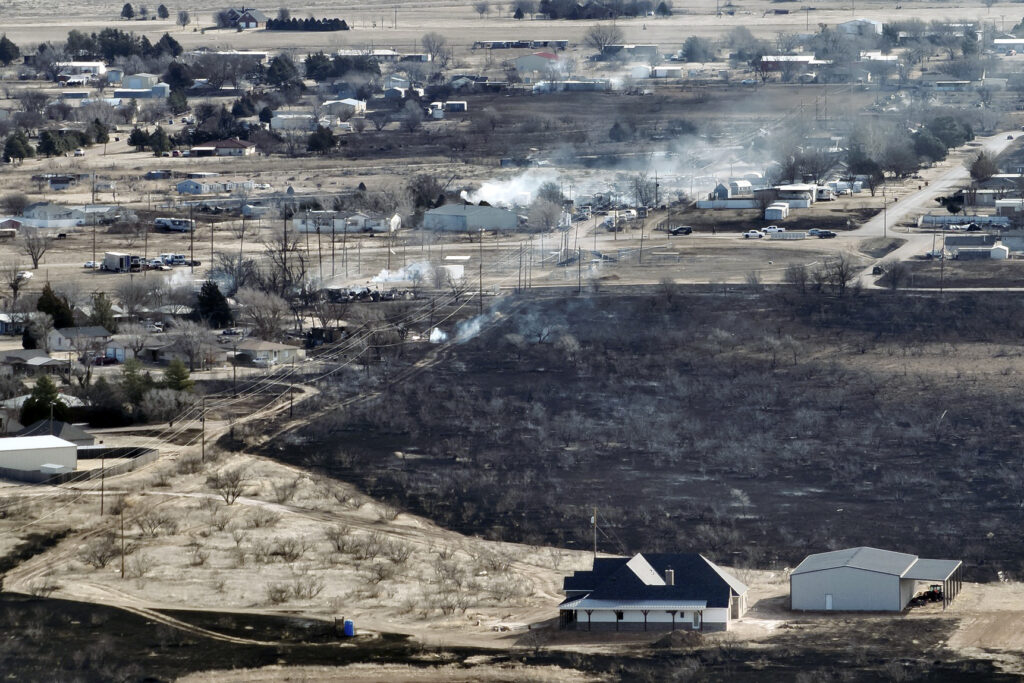
“It was like a ring of fire around Borger. There was no way out … all four main roads were closed,” said Adrianna Hill, whose home was within about a mile of the fire. She said wind that blew the fire in the opposite direction “saved our butts.”
The Pantex nuclear weapon plant, northeast of Amarillo, evacuated nonessential staff Tuesday night out of an “abundance of caution,” said Laef Pendergraft, a spokesperson for the National Nuclear Security Administration’s production office at Pantex. Firefighters remained in case of an emergency.
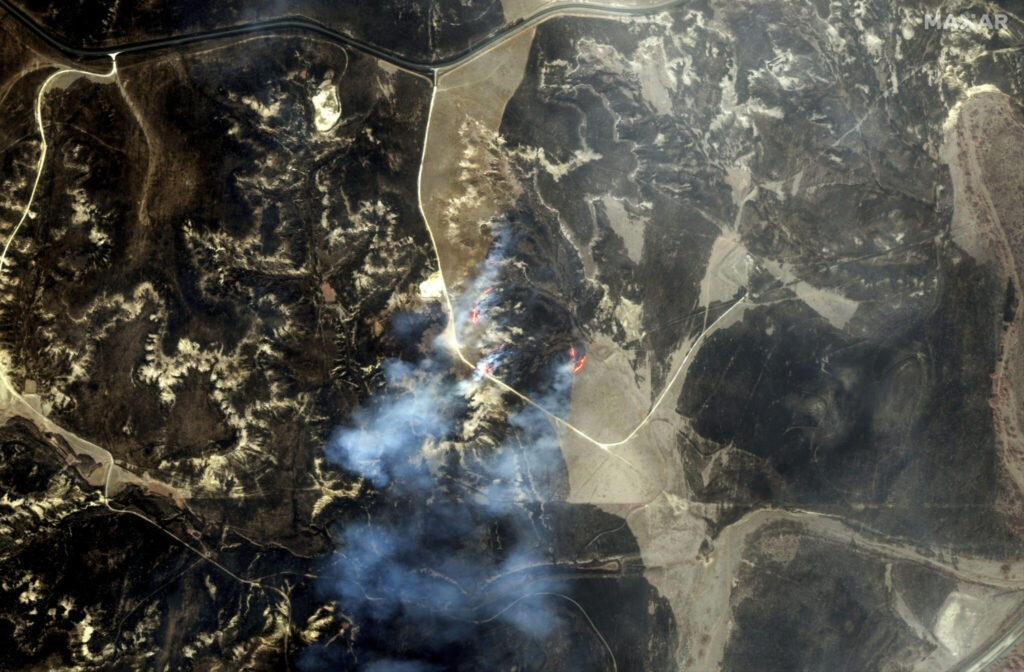
Pantex tweeted early Wednesday that the facility was “open for normal day shift operations.”
The Smokehouse Creek Fire spread from Texas into neighboring Roger Mills County in western Oklahoma, where officials encouraged people in the Durham area to flee. At least 13 homes burned in fires in the state’s Panhandle region, officials said Wednesday.

